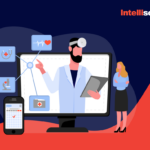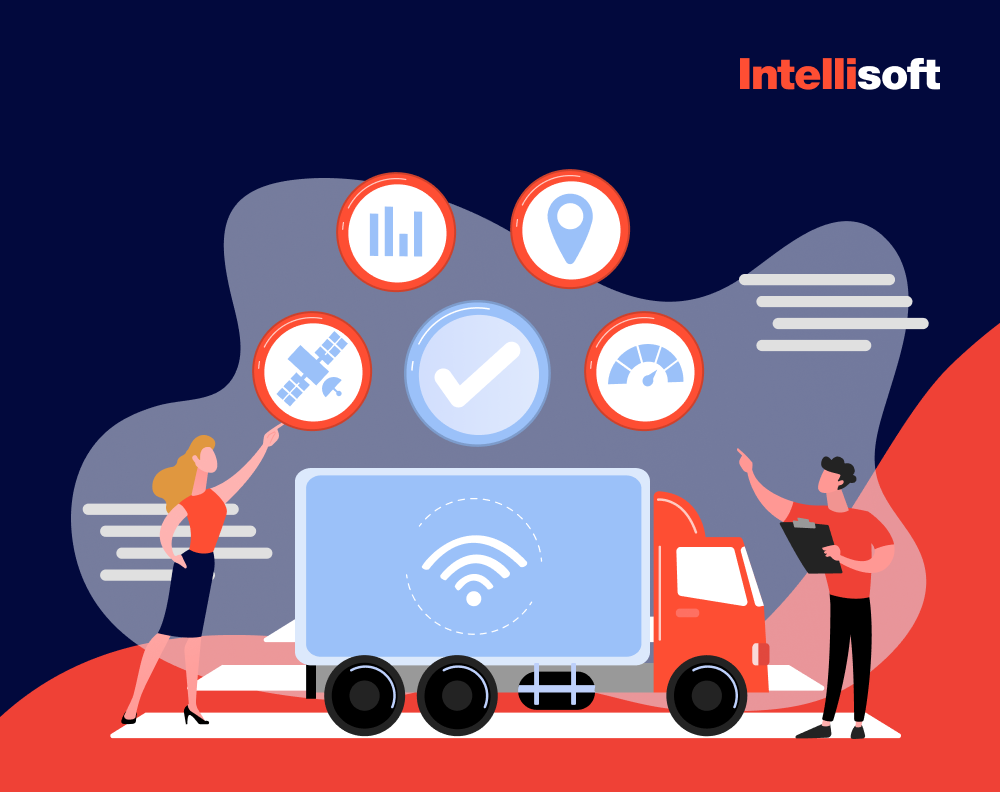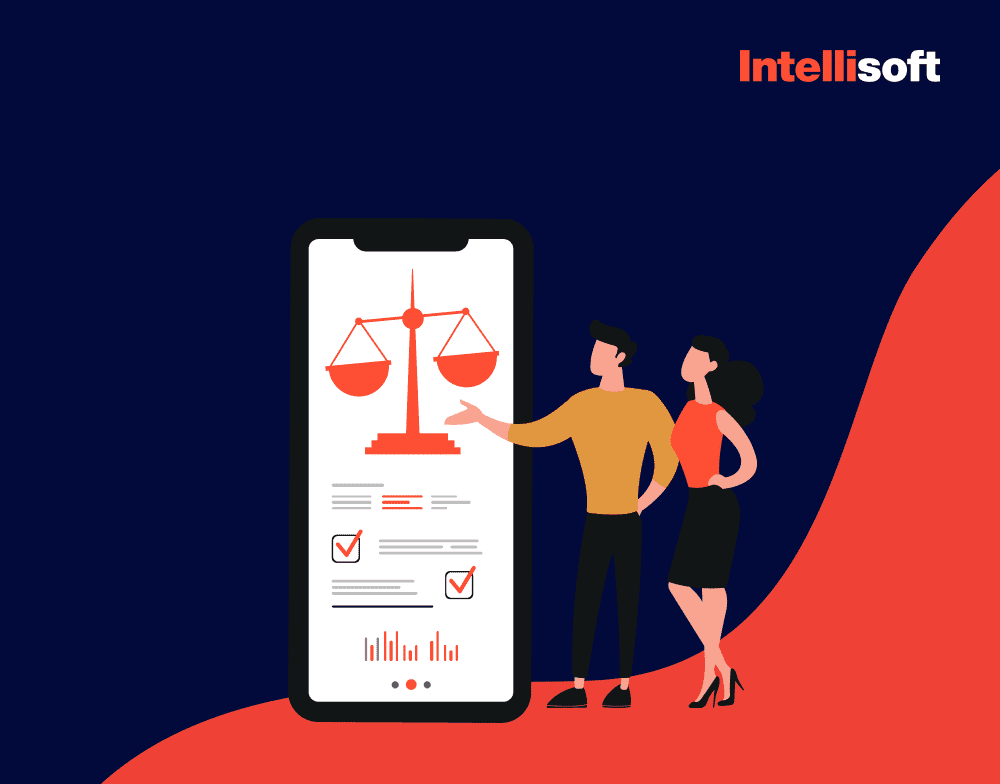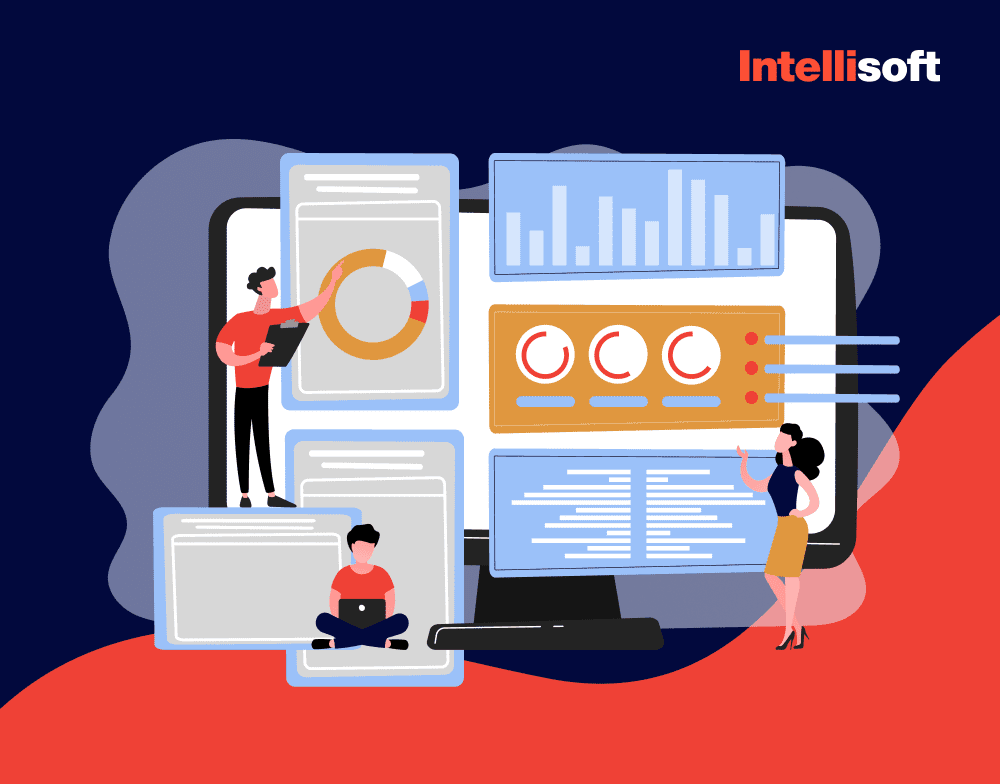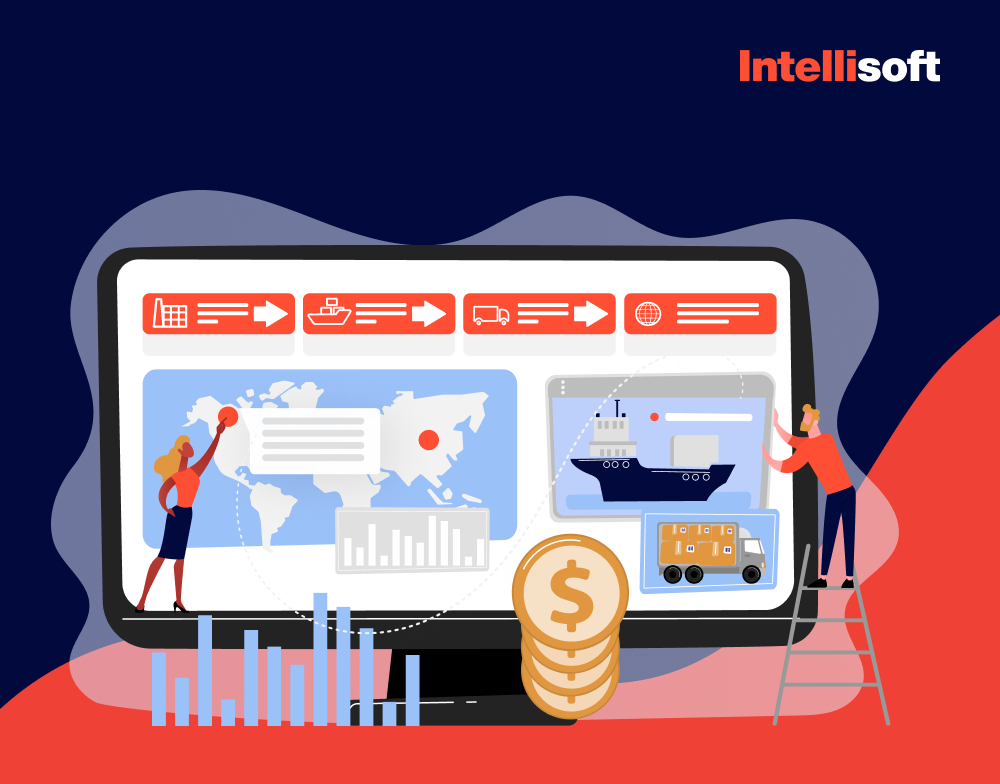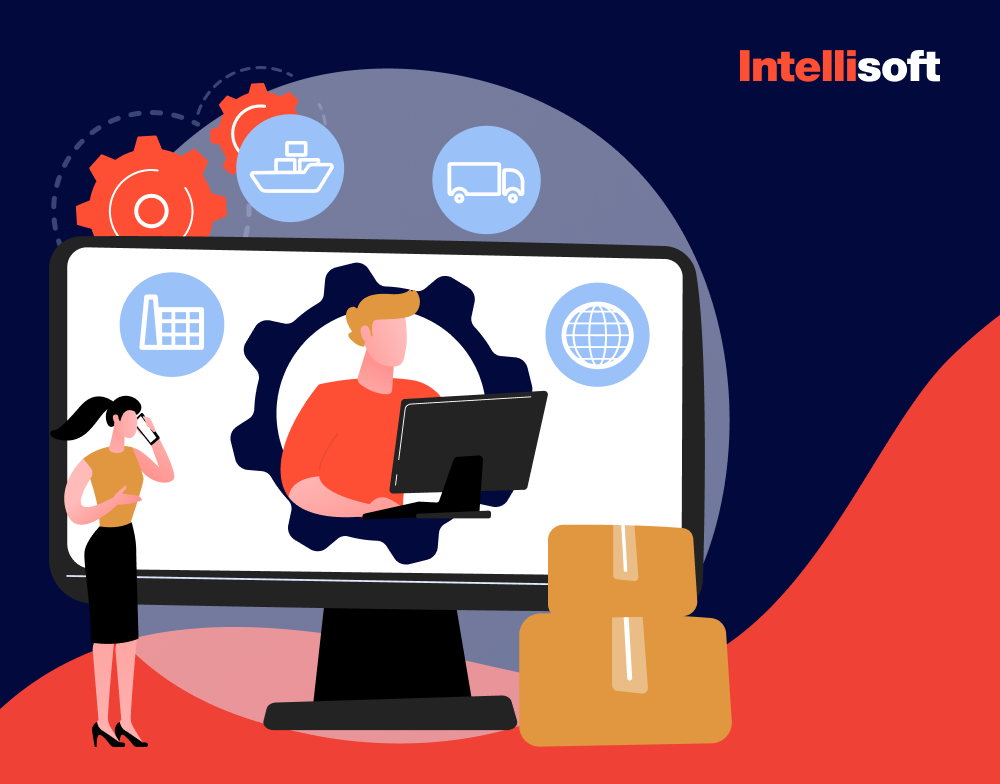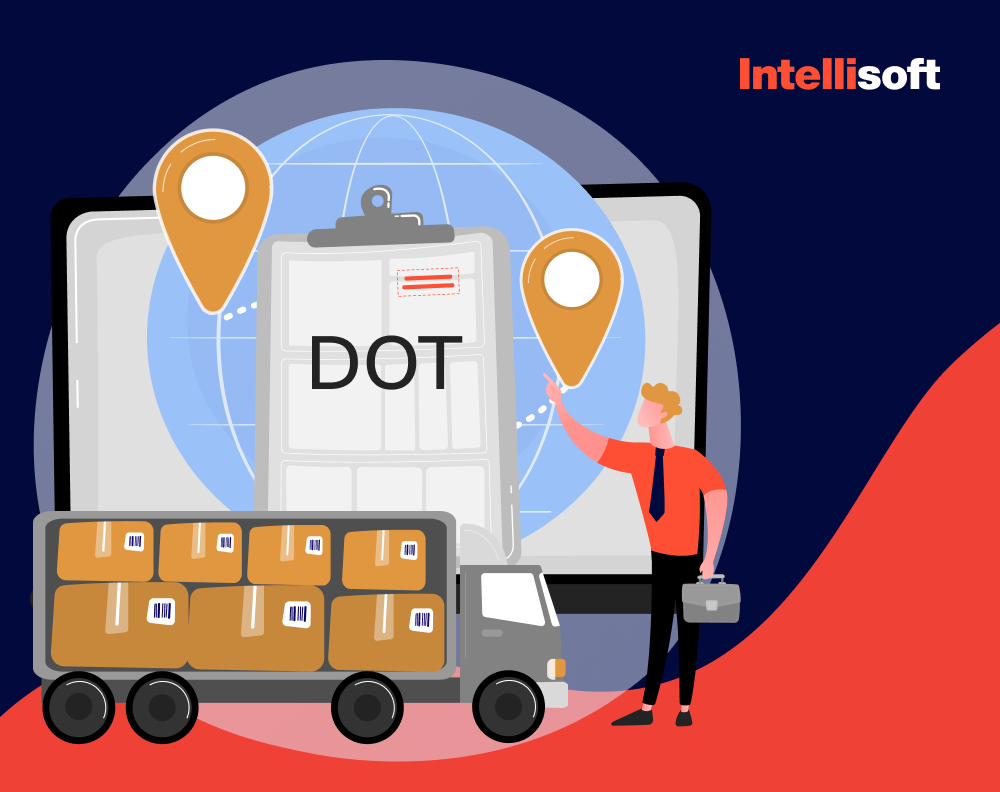Need Developers For Your On-Demand Project?
There’s nothing easier than ordering food online or booking a taxi. You can do it from any location, any time of the day – all you need is your phone and an app. Uber has gone even further, and now it is possible to use it to provide on-demand trucking services and allow customers to book trucks for any need. The success of apps like Uber truck service shows a huge demand for these services, thus, shippers and drivers need a solution that will make the process swifter and more transparent.
At IntelliSoft, we have a lot of experience developing software solutions for various industries, including the transportation and logistics industry. In 2017, we worked on a custom solution for a marine transporter Ingram Barge. Our team created a custom fleet management and freight tracking web application that helped the client visualize and manage barges in the fleet on top of existing IT infrastructure. Our years of experience in the industry have helped us gain the expertise and skills necessary to help you with an on-demand truck app that will meet your requirements and be competitive in the market.
In this article, we will talk about how Uber has revolutionized the trucking industry and how it helps solve issues in the transportation and logistics sector. You’ll also learn about the main features of on-demand trucking applications, their development stages, and costs.
Now, let’s move on to the most exciting part and discover why Uber Freight is so successful and how you can create an app like that, even if you have a limited budget.
Table of Contents
How Does Uber For Trucks Work?
Uber For Trucks works like the Uber taxi, but it has one main difference: you book a space in a truck instead of booking a cab. It was developed for commercial shippers and carriers as an alternative to the traditional freight process.

Uber truck service is an on-demand truck-sharing platform that matches a shipper who needs to deliver cargo and a carrier going to the same destination. Since it’s an application for both shippers and carriers, it consists of two separate apps (for shippers and drivers).
Whenever a shipper needs to deliver goods somewhere, they can book freight rides either the same day or in advance for a week. They add information about the goods, the size of the cargo, its height, the location where it should be picked up and delivered, and the delivery date. Carriers then look at the list of orders in their app, choose a shipper, and confirm a booking.
The price under the Uber Freight app is predetermined and guaranteed, depending on the cargo size, weight, and delivery location. The driver receives money only after the goods are delivered.
How to monetize a logistics delivery app
If are thinking about the development of a logistics app like Uber for trucks, you need to know how to monetize it beforehand. There are several ways to do it:
- Delivery fees. One way to monetize the application is to charge fees for each delivery, depending on the distance or cargo weight. You can charge more if the delivery is urgent.
- Subscription models. Offer subscription plans for users that need frequent deliveries. Subscriptions can include various benefits, such as promotions or priority services.
- Ads and partnerships. You can partner with relevant businesses and advertise their services on your application. However, too many ads can discourage people from using your app. Make sure that the ads are relevant and not that frequent.
- Premium features. You can provide paid premium features for drivers and shippers. For example, 24/7 chat support, expedited delivery options, or push notifications.
How does Uber Freight solve issues in the transportation and logistics sector?
When Uber launched Uber Freight, it expedited traditional transportation and logistics transformation. This app has revolutionized how goods move and are managed. Now, the goods can be transported quickly, the process can be handled on a smartphone, making logistics services transparent and efficient.
Let’s take a look at how Uber Freight solves issues in the transportation and logistics industry:
- Makes the process more time-efficient. Previously, shippers had to spend hours negotiating all details with carriers, organizing the process, and choosing the right truck. It could take several weeks for a shipper to send the goods. Uber Freight makes this process much faster as it takes just a few clicks to find a carrier and schedule shipment pickups.
- Offers 24/7 freight shipping management. There is no need to make phone calls or fill in tons of documentation anymore. It is possible to book a truck any time of the day or night; all you need is the app.
- Increases transparency. The traditional freight industry has often faced issues connected to a lack of transparency and visibility. Uber Freight solved this issue by providing users with real-time tracking and monitoring, allowing shippers and carriers to check the status of shipments at any time and get detailed information.
- Provides access to an extensive network. Uber Freight has a vast network of carriers, including small carriers and independent truck drivers. There are multiple options to choose from, both for the shippers and carriers.
- Simplifies operations. All the processes are now streamlined, with no need to fill in documentation because it is automated. Moreover, Uber Freight makes payments faster and eliminates any administrative issues.
Top Online Trucking Services
To stay on top of the competition and have a successful pickup truck delivery service, you need to know who your competitors are. Let’s look at the top online trucking service providers and how they work.
Convoy

Convoy was founded in 2015 in Seattle as a digital freight network. It works in a similar way to Uber truck delivery – by matching shippers with carriers, using their location. To receive requests, drivers provide details about the pickup and drop-off locations and then can accept requests in the Bids section. Shippers and drivers don’t have to fill in any paperwork as all documentation is available in the app. Convoy is available both for mobile and desktop use.
Freight costs in Convoy are calculated with the help of ML for freight pricing. This model analyzes historical shipment records, macroeconomic factors, carrier quality, and other factors, to calculate the price and accurately reflect the current state of the freight market.
BlackBuck
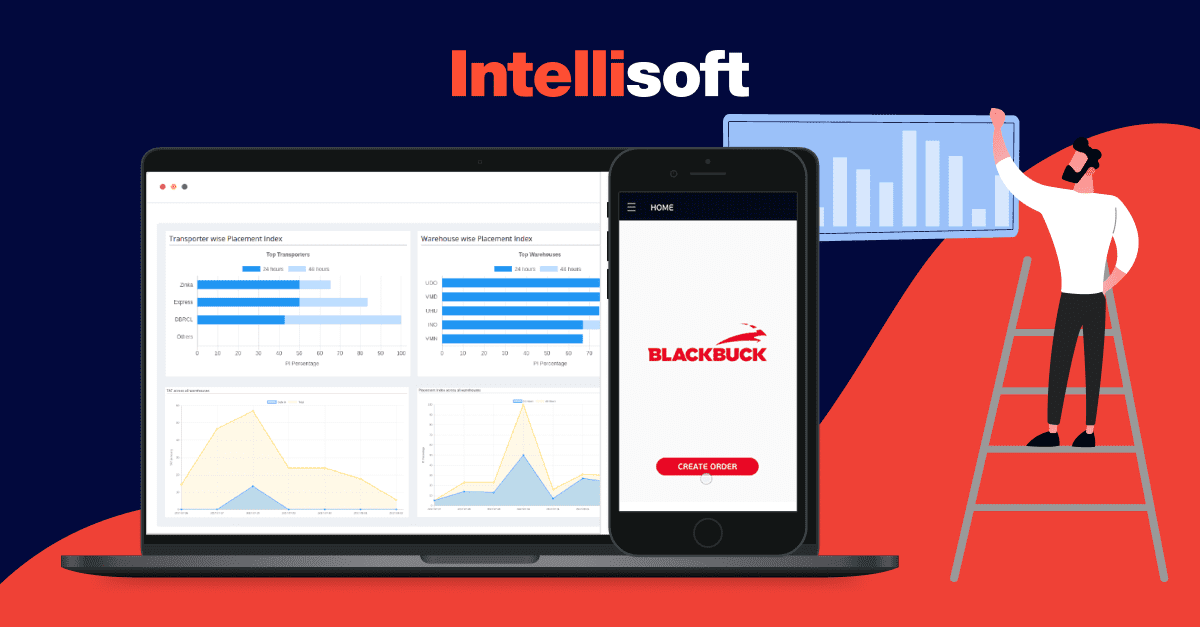
BlackBuck is a digital trucking company established in 2015. This pickup truck app connects shippers, drivers, and forwarders with automated matching. It provides real-time tracking and control capabilities. It operates in Europe and has offices in Warsaw and Amsterdam.
Currently, more than 2.5 million carriers and forwarders are using BlackBuck, as well as 30,000 shippers. Every day, more than 5000 shipments are completed successfully via BlackBuck.
The platform offers short payment terms, guaranteed timely payments for carriers, a flexible, cooperative system, and attractive per-kilometer rates.
Doft

Doft is a relatively new player in the trucking industry. It is an on-demand truck delivery app that allows freight shippers to book trucks from small and independent carriers. It has two separate apps: for shippers and carriers.
The app for shippers allows users to book regular or prepaid loads, use the built-in chat, estimate freight rates, and track their shipments in real time. Moreover, it is possible to receive notifications on the delivery status.
The app for carriers has an AI-powered rate forecast, upfront pricing for prepaid loads, loads search based on factors such as a city or zip code, and an option to call shippers in the app.
Now, let’s move on to your app and its essential features.
On-Demand Trucking App Main Features
All successful on-demand trucking apps are similar: they all consist of three main parts. These parts are the carrier app, the shipper’s app, and the admin dashboard. If you want to build your on-demand trucking app, build an MVP with the essential features and add the rest gradually.
Here’s the list of essential features for the three parts of your app and functions that can be added after the launch.
Driver App Features
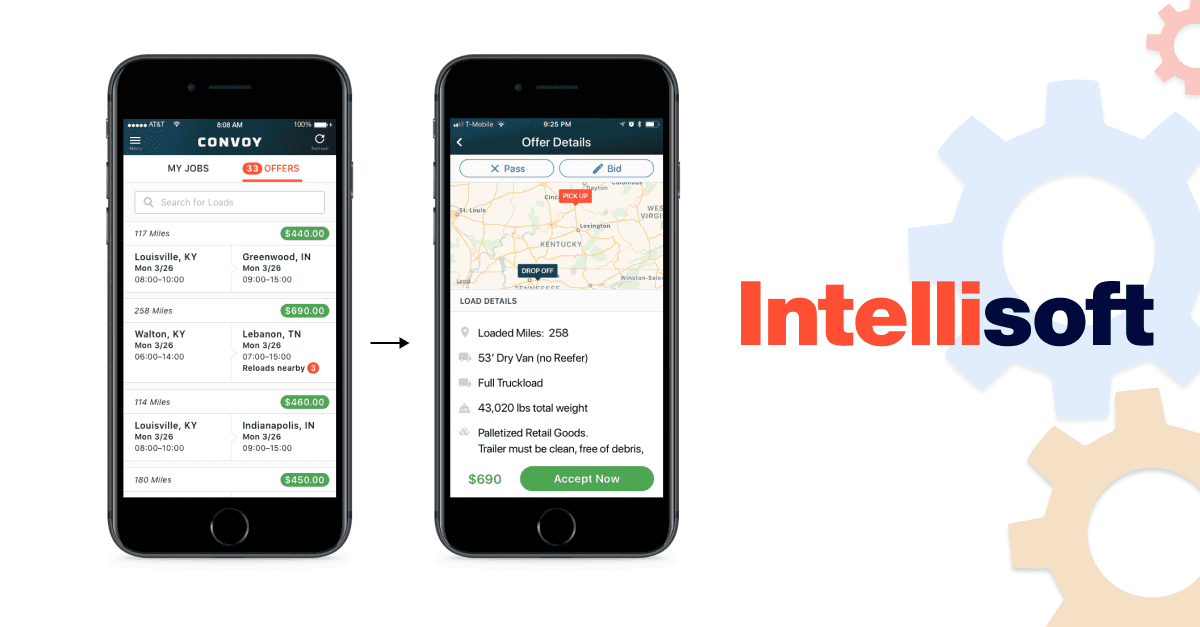
This app aims to help drivers find new orders and receive all essential information about the shipment (size, weight, description, location). Therefore, the app must include a map with routes and fuel stations, a feature for receiving payments, and digital documentation. The main functionality of the driver’s app includes:
- Registration form
- Orders list
- Freight details
- Accept/decline functionality – filtering options based on location/load type
- A built-in chatA built-in payment gateway
- A map with routes and fuel stations
- Push notifications
- Scheduling functionality
Shipper App Features

When you create an app for shippers, remember that they would like to be able to access the app from desktop and mobile. The shipper journey on the app consists of the following steps: they place a shipping order, enter the details, select the carrier, track the delivery, and pay for it. Thus, the essential features should include:
- Shipper registration form
- Order placing
- List of available drivers, a built-in payment gateway
- Real-time order tracking on the map
- Online documentation
- Rating and reviews, notifications
Admin Panel Features
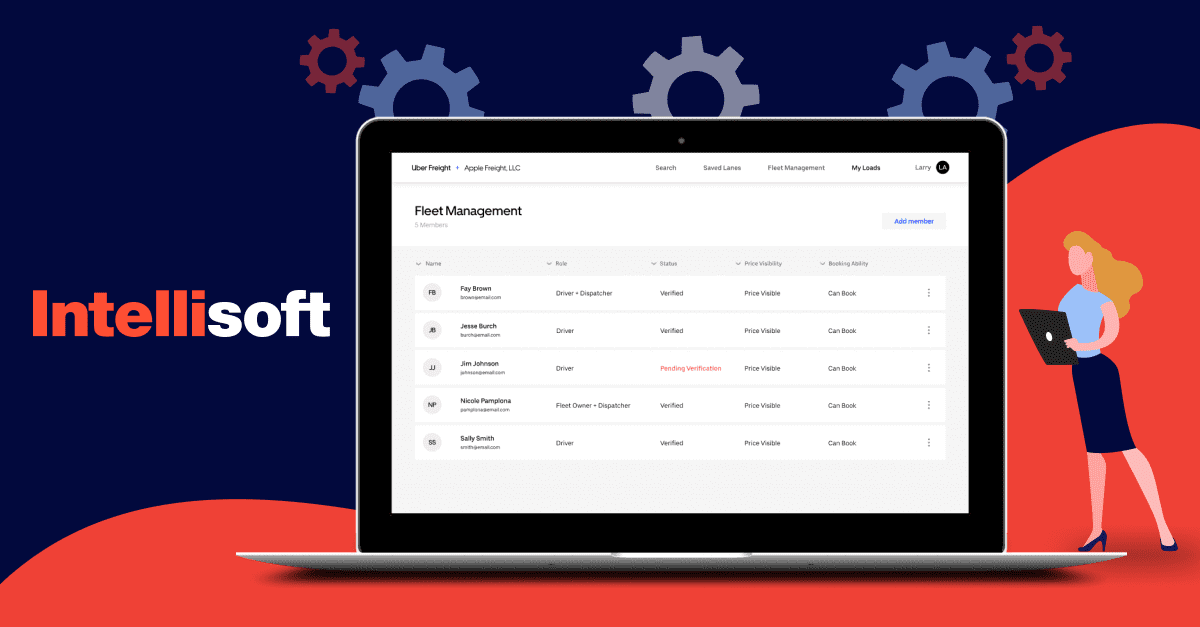
This app is used to manage the interaction between the two parties. It is created for the admins who manage the deliveries and payment transactions and gather user data. For this purpose, the app should have the following functionality:
- A matching algorithm based on the location and freight details
- Enhanced security with two-factor authentication
- List of new drivers and queries
- A dashboard for the admin panel with the delivery flow, current orders, finished deliveries, etc.
- Invoicing and billing service
- Trip Log Reports that include the start and the end time of every trip, orders fulfilled, and the miles covered
Advanced Functions
After you have added all the essential features, you can move on to adding some additional functionality to stand out among your competitors. These features include
- Built-in messaging for shippers and drivers, weather updates to calculate a realistic delivery time
- Suggested shipping options for carriers
- Fuel price map to find stations with the lowest prices
- Traffic analysis in real-time
- Automated order processing
- Optimized fuel costs by providing information about routes, delays, customs rules, etc.
How to develop an Uber For Trucks
Below we’ve shared key steps for creating your logistics app like Uber Truck from scratch.
Step 1: Decide what type of app you want
You can create an app to extend your company if you own a logistics business. You can create a marketplace if you’re a third party who wants to help shippers and carriers connect. Thus, decide what app you want to create first because the following steps depend on your choice.
You should also decide whether to create for iOS, Android, or a cross-platform solution. This choice depends on your budget and target audience.
Step 2: Find a partner
Building an app will be faster and easier if you don’t do everything by yourself. Thus, find an experienced team, like IntelliSoft, who will help you develop your logistics app. Ensure the team understands your goals and requirements and has prior experience working on similar projects.
develop logistics projects with IntelliSoft
Step 3: Build an MVP
Before building a complex multi-part application, focus on creating an MVP first. A minimum viable product is an app built with minimum budget spending and resources, but maximum efficiency. It will have all the essential features and let you test the app before the release. You can also contact potential sponsors with your MVP if you need additional investment for further development.
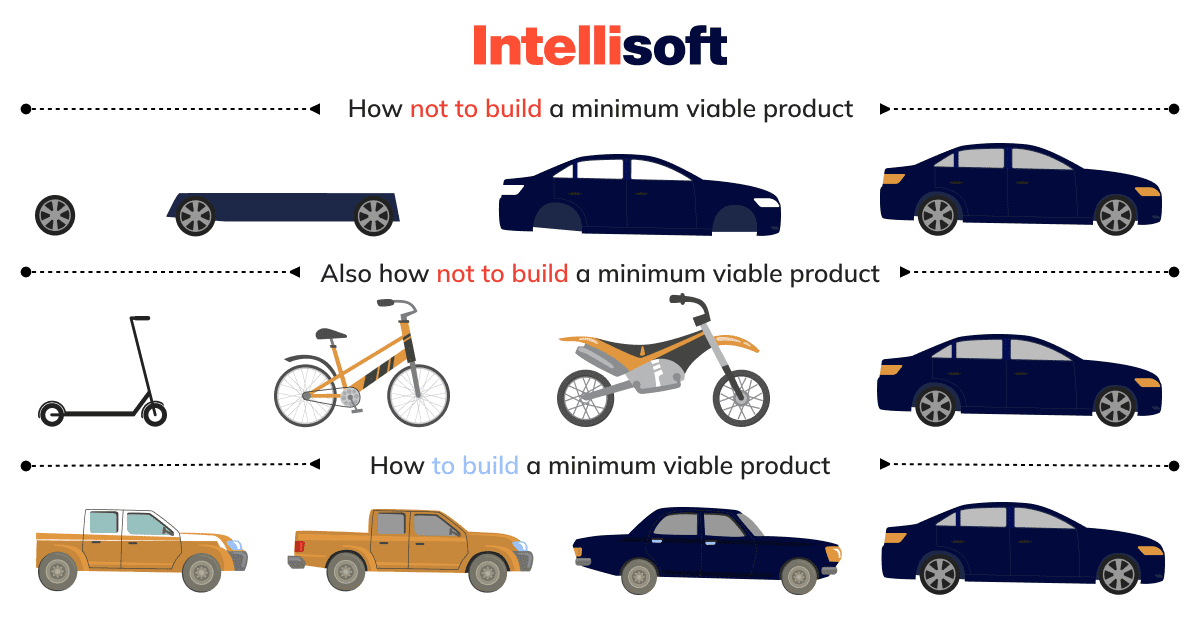
Step 4: Develop the final version
After you’ve created an MVP and made the necessary improvements, you can move on to building the final product. For this step, you would need a development team and a project manager to control the process, manage risks, and estimate the development time. However, you should also be aware of everything happening during development.
Step 5: Test the final version
The next step is testing the final version by QA professionals. They know what technologies and tools to use to ensure your app is ready to launch without any bugs and issues.
QAs perform functional testing, checking whether there are any errors or bugs, whether payment gateways are working properly, and whether all fields are correctly displayed on the screen.
Next, QA engineers test the application’s performance, ensuring that it works under different load conditions. They also check its speed, whether it interferes with the use of other platforms, and whether it runs in the background.
QA specialists also test the app’s usability, design, interface, and localization. Finally, they create bug reports and send them to developers for improvement.
Step 6: Launch and gather feedback
Finally, it’s time to launch your creation. Publish it on App Store and/or Google Play, create a marketing strategy for promoting the application, and gather user feedback. Reviews from your target audience will help you improve and grow your app.
Tech Stack You Need to Build a Pickup Truck App Like Uber Freight
The tech stack may differ significantly depending on the type of app you’re creating and its features. But still, it will define the development team composition required to implement your project. So, let’s look at the tech stack that is usually used for creating on-demand trucking apps.
Native iOS Tech Stack
This is used for creating iOS applications, and the two programming languages used include Objective-C and Swift. Objective-C is an easy-to-use language for iPhone apps. It is a standard language, so finding experts who use it is easy. Swift is an open-source language that is known for its scalability and security.
Native Android Tech Stack
If you’re creating an app for Android, you can use Java or Kotlin languages. Java allows adapting an app for any platform, and Kotlin is a new open-source language for multiple platforms. Java is a true classic in programming languages, so it’s easy to find an expert with proper qualifications. However, Kotlin is more straightforward in maintenance, and Google recommends following a Kotlin-first approach.
Hybrid Tech Stack
Hybrid apps require the use of either Cordova or Ionic. Cordova is a framework that offers ready-made templates for faster app development. It interacts with JavaScript and HTML5. With Cordova, the code should be written only once, and it can be used for different operating systems.
Ionic is based on the Angular.js framework making it possible to create hybrid apps that act like native ones.
Cross-Platform Tech Stack
Cross-platform development is a great option to save time and money and launch both on iOS and Android. To do this, you can use React Native or Flutter. React Native uses APIs to provide a seamless user experience, and apps like Facebook and Instagram prove this.
Flutter is a Google framework that requires writing the code only once and using it for Android, iOS, Windows, and other OS.
Related readings:
- How Predictive Analytics Solutions Are Benefitting Supply Chain
- Top 7 Smart Warehouse Technologies for Ultimate Warehouse Optimization
- How to Develop Logistics Management System: Timeframe, Tech Stack, and Costs
- Barcode Scanning for Ultimate Inventory Digitalization
- How To Develop An App For Logistics Business And Make It Successful
On-Demand Trucking App Development Costs
There is no universal price for creating a trucking app like Uber for pickup trucks. The cost depends on factors such as the number of features, the number of platforms, and the location of your development team.
The number of features
The more features you want to add, the higher the cost. That is why we advise you to create an MVP with essential features first, collect feedback, prove your idea, and then move on to adding more features if needed. Moreover, some features are more expensive than others. For example, adding an AI algorithm will cost more than basic features.
The number of platforms
You need to decide whether to build for iOS or Android because it influences the choice of the tech stack and, as a result, the development costs. The choice will depend on your target audience, the location where you launch your app, and the features it will have.
The location of the development team
The country where your team is from also influences the final costs. For example, Ukrainian developers charge $30-45/hour, while developers from the United States charge more than $90/hour.
Want To Develop An Uber-like App?
When hiring a development team, consider building this team structure to cover all aspects of the development process:
- Project manager: 1
- UI/UX designer: 1
- Android developers: 1–2
- iOS developers: 1–2
- Backend developer: 1
- Frontend developer for web admin panel: 1
- QA specialist: 1
How can IntelliSoft help?
At IntelliSoft, we have years of experience creating IT solutions for various industries, including transportation and logistics. We support our clients during the development process from start to finish, with advisory and consultancy and with maintenance and support. Here’s how IntelliSoft can help you:
- Advisory and consultancy services. If you need help with any aspect of trucking app development and need a consultation, we can help.
- Discovery phase. We can help finalize your product vision, validate your idea, identify your business strategy, plan your budget, define goals, predict and reduce risks, and more.
- MVP development. We offer MVP consulting services, improvement of the current MVP, and prototyping. We also perform market analysis and help move from an MVP to a full-scale product.
- Security & Compliance. Security and compliance with the latest regulations are our top priorities. We will ensure that your app meets all the requirements and regulations and that your data is protected.
Conclusion
Uber Freight has revolutionized the transportation and logistics industry, making the process faster, more efficient, and more secure. If you have been thinking about creating your trucking app, it is possible, but you need to assess your budget and find an experienced development team. Keep in mind that the development costs depend on the number of features, platforms, and the location of your development team. Fill in the dev team calculator to estimate your running costs for a development team.
AboutKosta Mitrofanskiy
I have 25 years of hands-on experience in the IT and software development industry. During this period, I helped 50+ companies to gain a technological edge across different industries. I can help you with dedicated teams, hiring stand-alone developers, developing a product design and MVP for your healthcare, logistics, or IoT projects. If you have questions concerning our cooperation or need an NDA to sign, contact info@intellisoftware.net.
